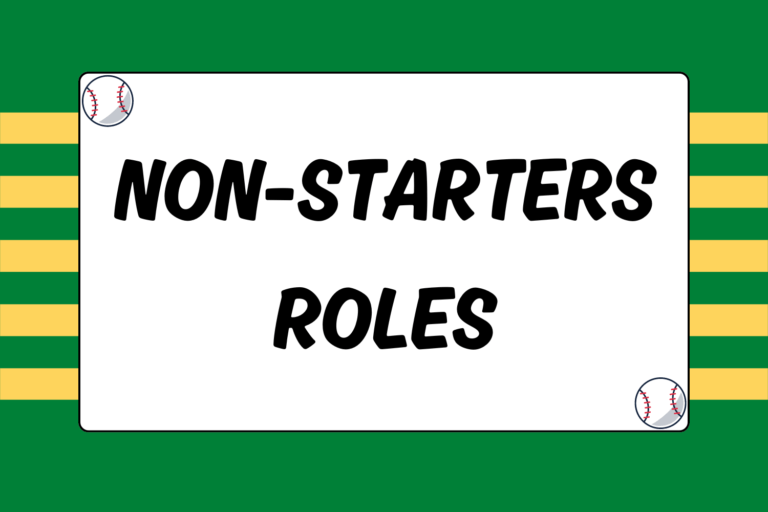Many youth baseball organizations use slightly altered versions of the official rules to simplify the game for young players. In many cases — Little League, for example — this includes not allowing runners to lead off the base prior to the pitch. However, once players reach a certain age (usually around 13, but sometimes younger), leading becomes legal. What’s more, leading becomes a significant strategic aspect of baseball and an important skill for players to learn. This guide outlines leading tips and technique so you know how to handle yourself once you reach first base.
Know the Situation
Coaches often cannot afford to devote much practice time to base running. Luckily, running the bases is largely a mental skill; a smart base runner is a good base runner. More to the point, understanding what to do on the bases in a given situation tends to be more useful than practicing it over and over again.
Before you take your lead from first base, take a moment to assess the situation. This will put you in the proper mindset to make quick decisions on the base paths, and it will also help you decide on the optimal lead to take. Here are some factors to pay attention to:
Lefty or righty:
You should already know the pitcher’s dominant hand (having just faced him), but keep this piece of information in mind when on the base paths. Lefties tend to have more deceiving pick-off moves, so be on your toes against a southpaw.
Score:
If the game is close, you may try to be more aggressive with your lead since your potential run is more important — just be careful not to get picked off if you’re the tying run! But if your team is up or down by a lot of runs, take a more conservative lead. Your run isn’t as vital, and you certainly don’t want to cost your team an out on the bases in a blowout.
Other base runners:
Always know if the other bases are occupied before the pitch. If there’s a runner at second base, you can probably afford to extend your lead. In this situation, the first baseman will often play behind you and the pitcher likely won’t pay you much attention.
Offensive signs:
Of course, one of the biggest keys to base running is knowing your team’s signs. If a bunt or steal is called, take a fairly aggressive lead to give yourself the best chance to reach second base quickly. On a hit-and-run, shorten your lead a bit; you want to the pitcher to ignore you and pitch the ball.
Hot Tip: Hide Your Lead
If you don’t want the pitcher to make a pick-off throw, try moving forward in the baseline a few feet (towards home plate). Because of the angle at which the pitcher stands, this will make your lead appear shorter than it actually is.
Taking Your Lead
Now it’s time to venture off the base. Remember that if the ball is in play, and you’re not on a base, you can be tagged out. Be ready for a pick-off attempt at any time. There is an accepted technique for taking a lead. Follow these tips when leading off first base to put yourself in the best possible position to advance a base or retreat if necessary:
Watch the pitcher
Once you take your lead, never take your eyes off the man on the mound. A smart pitcher will throw over to first base the moment he sees you look away. When he’s in the set position, always watch the pitcher’s feet. Whether he pitches or attempts a pick-off, his feet will be the first body part he moves.
Listen to your coaches
Your first base coach is there to act as an extra set of eyes for you. If he yells “Back,” don’t think about it, just dive back to the base. The coach will also help you with the length of your lead, letting you know if you can take an extra step or if you should move back towards the base.
Weight balanced
Take your lead in an athletic position, such that you’re ready to bolt for second or dive back to first at a moment’s notice. Your feet should be spread out wider than shoulder-width and your hands should never rest on your knees. Keep your weight forward on the balls of your feet and bend your knees. Always stay balanced.
Don’t cross over
As you extend your lead away from the base, use small shuffle steps. Taking long steps or crossing your legs over puts you momentarily off-balance, and therefore makes you vulnerable to a pick-off. Even if the pitcher isn’t looking, get in the habit of never crossing your legs as you lead off.
Secondary lead
Once the pitcher begins his delivery to home plate, you should take your secondary lead, which consists of a few quick shuffle steps. This will get your momentum moving towards second base in case the ball is hit in play. Make sure the pitcher is throwing to home plate before you take your secondary lead.
Back to the base
Unless the batter hits the ball, get right back to the base after each pitch. You will be pretty far off the bag after your secondary lead, so don’t delay in scampering back. And, as always, be prepared for a pick-off throw.
Hot Tip: One-Way Lead
Against a left-handed pitcher, coaches will often instruct you to take a “one-way” lead to avoid getting picked off. This means you extend your lead a little farther than normal (about a half-step), but keep your weight shifted back towards first base. When the lefty lifts his leg, step back towards the base with your left foot (so you can continue this motion if he throws over). Only once he delivers the ball to home plate should you extend your lead towards second base.
Diving back to First Base
It’s important to be able to get back to the base quickly if the pitcher decides to attempt a pick-off. Many coaches refer to the proper technique for this move as “a step and a dive.” Again, watch the pitcher. If a right-hander moves his back foot, that means he’s throwing to first base.
From your athletic position, quickly turn your shoulders towards first base. In one motion, pivot your left foot, step towards the base with your right foot, and push off into a dive. Then, extend one arm out and try to touch the back of the base (closest to the outfield). Keep your head up in case the throw gets away and you can advance a base.
Finally, make sure you never break contact with the bag after a pickoff. Dive back to the bag hands-first. Then as you get up, make sure you touch the base with your foot before you remove your hand.
Lead with Your Head
Base running, unfortunately, is a skill that is often noticed only when it’s done poorly. The best way to avoid mistakes on the base paths is to know the situation; hesitating for even an instant can mean the difference between safe and out. Ultimately, leading off is a way for you to gain a slight advantage over your opponent. And the better you are at taking leads, the bigger advantage you’ll gain. Just remember that your opponents will do anything they can to take away that advantage!





